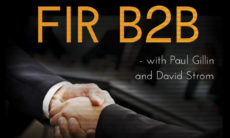B2B marketers understand the importance of qualifying a lead before it goes to a sales person, but sometimes the qualification process can get tricky. Today, most established companies assign the qualification role to an SDR, or sales development rep, a dedicated function that has one foot in sales and one in marketing. But it’s all part of a fairly complicated process. To establish process effectively, follow these 12 success tips.
First, set your qualification criteria in concert with your sales counterparts. Think well beyond the simple score generated by your marketing automation system. Then, set up your process. As you plan, here are 12 key points to guide B2B marketers in improving their results.
- Self-reporting. Direct your campaign inquiries to a web-based response form for their preliminary qualification, especially in a high-volume environment. Self-reporting on the web saves money for you and time for your prospect. Adding qualification questions to your form is going to reduce campaign response rates, but pays off in efficient lead handling.
- Utilize email. For outbound inquiry qualification, email is today’s preferred medium. Design your emails to link to a web-based qualification form. Make sure it’s mobile friendly. Your emails and web forms should also offer several other response media options, including email, phone and social media. Try adding a “call me now” feature.
- Be realistic about tele-qualifying. Today’s business people are rarely at their desks. Even if they are, they’re likely to let their calls go to voice mail as screener. Expect tele-qualification to require between eight and twelve attempts. Be sure to have a script ready when the phone call goes to voice mail.
- Alternating qualification messages. Set up an alternating qualification message series by medium. If email doesn’t work, try the phone, or if the phone doesn’t work, try postal mail. Include LinkedIn as part of the mix.
- Prep your script. If you’re using the phone to qualify, make sure your script is more about prospects and their needs and less about your company and your products.
- Set your maximum number of touches in advance. Base them on a reasonable number of contacts. For instance, if the prospect is unreachable after five phone calls and five emails, you may want to call it quits. But keep testing the cadence and frequency, for continuous improvement. The ROI on a customer relationship can be sizable enough to justify a long series of attempts.
- Have a nurturing program in place as your Plan B. Some inquirers are in the earliest stages of research, and nowhere near ready to talk to a sales person. But they may be eventually. If qualification outreach fails, move them to nurturing, which is a series of communications designed to keep the relationship going until the prospect is ready for the next step.
- Know when to give up. If nurturing goes nowhere, put the name back in the marketing database for re-promotion and flag the record accordingly. If the prospect shows interest again, follow the process.
- Adjust the process to the customer’s situation. You can’t force customers to be ready, but you can—and must—be there when they become ready.
- Manage inquiries on a First-In-First-Out basis. Don’t let a lead get cold while waiting to go to sales.
- Make sure your qualifiers concentrate on qualifying. This might seem obvious, but especially on the phone, it can be tempting to move into a sales conversation. Their only job—a hugely important one—should be to qualify, and set appointments on behalf of a sales person.
- Customize your outbound channel to the incoming medium. Respondents through digital channels expect fast—instant—response. So, use the tools needed to deliver, whether it’s autoresponders, chatbots, or 24-hour call centers.








